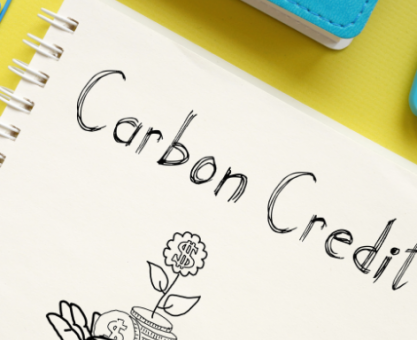Executive Summary
-
Explore the rapidly evolving relationship between carbon credits and renewable energy.
-
Understand how carbon credits can incentivize renewable energy projects.
-
Analyze the benefits and challenges faced by companies in leveraging carbon credits.
-
Gain insights into successful case studies and strategic tips for maximizing impact.
Introduction
In a world increasingly focused on sustainability, businesses and governments alike are turning to carbon credits and renewable energy initiatives to reduce environmental impact. But how do these two powerful tools intersect, and why should investors and corporates care? This article delves into the synergy between carbon credits and renewable energy, providing key insights into their combined potential to drive significant environmental and economic benefits.
Definitions / Context
Carbon Credits: These are permits that allow the holder to emit a certain amount of carbon dioxide or other greenhouse gases. One credit permits the emission of one ton of carbon dioxide or equivalent.
Renewable Energy Initiatives: Projects and strategies aimed at generating energy from renewable resources such as wind, solar, and hydropower, reducing reliance on fossil fuels.
Understanding these terms is crucial as they form the foundation for the intersection of carbon credits and renewable energy efforts.
Benefits / Pros
-
Incentivizing Green Projects: Carbon credits provide financial incentives for companies to invest in renewable energy projects by offsetting emissions.
-
Economic Viability: Carbon credits can improve the economic feasibility of renewable energy projects by creating additional revenue streams.
-
Market Growth: The integration of carbon credits can lead to exponential growth in the renewable energy sector, attracting investors and fostering innovation.
Risks / Cons / Challenges
-
Regulatory Uncertainty: Varying regulations across regions can complicate the integration of carbon credits and renewable energy projects.
-
Market Volatility: The price of carbon credits can fluctuate, impacting the financial stability of renewable energy projects.
-
Verification and Compliance: Ensuring that carbon credits are legitimate and properly accounted for can be challenging, requiring robust verification processes.
How to Integrate Carbon Credits into Renewable Energy Projects
-
Assess Emission Reduction Potential: Evaluate the potential emission reductions of your renewable energy project.
-
Acquire Carbon Credits: Research and purchase carbon credits from certified providers.
-
Implement Monitoring Systems: Establish systems to monitor and report emissions reductions.
-
Verify and Certify: Engage third-party verifiers to certify your project’s emission reductions.
-
Market and Trade Credits: Enter carbon markets to sell or trade credits, generating revenue.
A leading solar energy company in Europe successfully used carbon credits to fund the expansion of its solar farms. By selling certified carbon credits, the company was able to finance additional solar panels, significantly increasing its energy output and reducing emissions.
Case Study: European Solar Energy Corporation
Expert Tips / Strategic Insights
-
Stay Informed on Regulatory Changes: Regularly update your knowledge on carbon credit regulations to ensure compliance and maximize benefits.
-
Leverage Technology: Utilize advanced software for accurate emissions monitoring and reporting.
-
Engage with Experts: Consult with sustainability advisors to optimize carbon credit strategies and renewable energy investments.
Tools / Resources / Calculators
-
Carbon Credit Calculators: Use online tools to estimate the potential carbon credits your project can earn.
-
Regulatory Guides: Access regulatory guides to understand compliance requirements in different regions.
-
Market Platforms: Explore platforms like the European Energy Exchange for trading carbon credits.
Conclusion
The integration of carbon credits and renewable energy initiatives presents a compelling opportunity for businesses to not only reduce their carbon footprint but also enhance economic viability and foster innovation. By understanding the synergies and navigating the challenges, companies can make strategic decisions that benefit both the environment and their bottom line.























